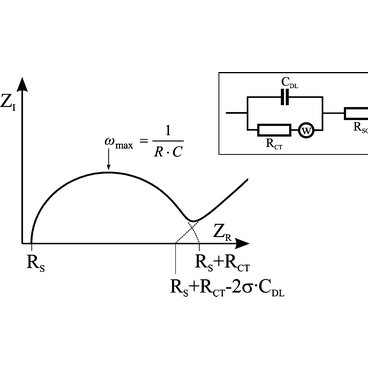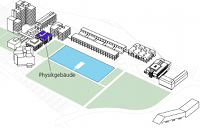Figure 1: Equivalent circuit diagram (inset) and exemplary data (Nyquist plot) for typical faradaic impedance spectroscopy.2
Position Indication:
Content

2012 - Thomas Winkler
Biophysics in the Materials Sciences
Dissertationsprojekt:
Aufenthalt an der University of Maryland, USA
ab 1.09.2011
Thomas E. WINKLER
Contact: initials(/\t)umn.edu
After completing his master ("Diplom") studies with his thesis on semiconductor physics at JKU, Thomas Winkler is now doing his PhD in a different field at a different university.
My research interests lie at the nexus of experimental Biophysics and Materials Sciences. These two fields have been the leitmotiv throughout my studies. They both fascinate me because of the minute features they involve - things orders of magnitude smaller than a human hair which we can nonetheless manipulate and study. The immense complexity of biological systems, now accessible to physical analysis and control, adds to the appeal of the former. The country with arguably the most research activity in that interdisciplinary area is the United States. From my own recent experience at the UC Berkeley as well as from online research, I know that many US universities have exceptional groups investigating the interactions of cells and biomolecules with solid state devices and in turn tailoring the latter to achieve certain biological effects. Especially the Graduate Program in Bioengineering at the University of Maryland caught my eye with its unparalleled Biochip Collaborative. This is exactly the area I want to do my PhD research in - it is a very dynamic one, with many exciting questions and problems as yet unsolved. Another advantage of the University of Maryland is to offer courses like “Biosensor Instrumentation and Techniques” which are not available in Austria to such extents. During my graduate studies, I am confident that I will profit from such instruction as well as the knowledge of experienced supervisors, which will undoubtedly enable me to learn a lot and help me make a lasting contribution to the field with my research.
Specifically, I hope to work on a lab-on-a-chip biosensing platform and its application to neurodegenerative disease treatment. In recent years, impedance spectroscopy has emerged as a powerful analytical method.1,2 It involves applying a small alternating potential to an electrochemical three-electrode system and measuring the current for a range of input frequencies. This allows for inference of detailed information about changes in capacitance and resistance either in the solution or at the electrode/electrolyte interface based on an equivalent circuit model, as shown in Figure 1. Using an appropriately modified electrode as the active biosensing interface, interactions thereon can thus be monitored. One concrete application is the monitoring of Clozapine levels in schizophrenia patients, which is very effective, but requires constant monitoring to optimize treatment and minimize the likelihood of incidence for the numerous serious side effects associated with it.3 A lab-on-a-chip would enable point-of-care analysis and significantly reduce the time delay between readout and appropriate drug adjustment.

As my curiosity is as limitless as the supply of unanswered questions, my long-term plan is to pursue a career in academia. I highly value the free exchange of knowledge it entails, and eventually hope to pass my own experience on as a professor. Toward that goal, upon my return home, I look forward to following similar lines of research in post-doctoral work here. I do expect Austria and the EU to make progress in catching up with the US in my area of interest. Through my acquired expertise, I am confident that I will be able to further such efforts.
1. Katz, E. & Willner, I. Probing Biomolecular Interactions at Conductive and Semiconductive Surfaces by Impedance Spectroscopy: Routes to Impedimetric Immunosensors, DNA-Sensors, and Enzyme Biosensors. Electroanalysis 15, 913-947 (2003).


 Audit hochschule und familie
Audit hochschule und familie

